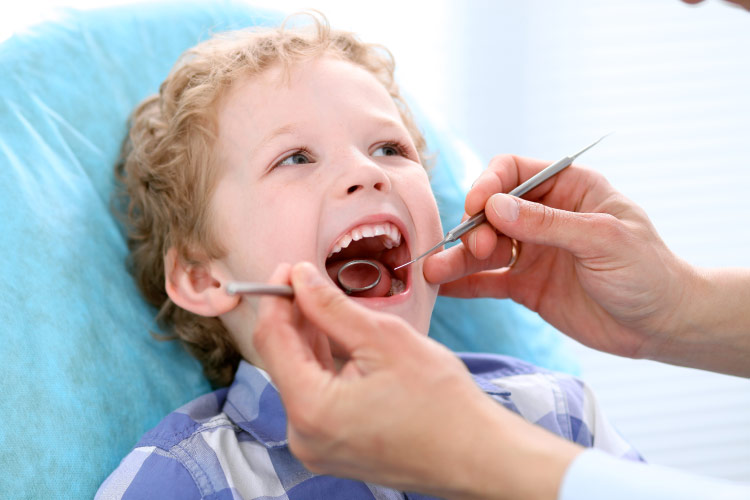
Did you brush your teeth this morning? How about last night? Did you do proper brushing technique? Did you ever think that brushing one’s teeth is the first line of defense when it comes to oral health? When we brush our teeth we remove the sugars, acids, and carbohydrates that accumulate in our mouths daily.
These elements are the contributing cause of periodontal disease, gum disease, and cavities. Brushing teeth removes sometimes harmful bacteria from our teeth, gums and tongue; it also helps alleviate bad breath! Experts in dentistry recommend brushing teeth twice a day, for two minutes at a time, every day.
Think of it as the 2/2/7 rule. With this in mind, the rest of our blog focuses on proper brushing techniques, different varieties of toothbrushes, and tips for brushing teeth to maintain a lifetime of oral health.
Proper Brushing Technique from Experts
We are going to walk you through the steps of proper tooth brushing technique, according to the American Dental Hygienists Association:
1) Place bristles along the gumline at a 45-degree angle. Bristles should contact both the tooth surface and the gumline.
2) Gently brush the outer tooth surfaces of 2-3 teeth using a vibrating back & forth rolling motion. A rolling motion is when the brush makes contact with the gumline and is moved downward toward the chewing surface; this is sometimes described as a circular motion. Move the brush to the next group of two to three teeth and repeat.
3) Maintain a 45-degree angle with bristles contacting the tooth surface and gumline. Gently brush using back, forth, and rolling motion along all of the inner tooth surfaces.
4) Tilt the brush vertically behind the front teeth. Make several up & down strokes using the front half of the brush.
5) Place the brush against the biting surface of the teeth & use a gentle back & forth scrubbing motion. Brush the tongue from back to front to remove odor-producing bacteria. (ADHA.org)
In summary, focus on brushing the outer, inner, and behind front teeth, and biting surfaces for a completely clean mouth. Make sure to pay attention to ‚troubled areas, such as: around crooked teeth, on the biting surface in deep pits, and behind the front teeth, both upper and lower. These areas can be hard to reach if brushed quickly and generally lead to a quicker build-up of bacteria.
Types of Toothbrushes for Proper Brushing Technique
Have you ever gone to the store, looking for a new toothbrush, deodorant, or shampoo and simply felt overwhelmed by the options available? We know the feeling, which is why we are giving you a breakdown in the different types of toothbrushes, with help from our friends at Oral-B.
Soft or Extra Soft Bristles vs. Medium Bristles – Choosing a toothbrush with soft or extra-soft bristles is the most common choice for patients and dentists. These bristles are especially gentle for those with sensitive teeth and gums, or for someone recovering from dental treatment. Some people prefer medium or firmer bristles because they are believed to do a better job of removing plaque from the surface of the teeth. While this is not necessarily the case, firm-bristled toothbrushes are more beneficial for some users. It is important to check with your dentist to make sure the toothbrush is right for you.
Toothbrush Head Shape – Toothbrush heads come in a variety of shapes and sizes that are made to fit different sizes of mouths. Some are long, while others are short. When it comes to bristles, these are different as well; bristles can be shaped like a cup to clean around teeth, or they can have a diagonal design that is perfect for cleaning along the gumline and the sides of teeth. Some toothbrushes mix in longer bristles, which help to clean between the teeth. If you have a question about what size or shape your toothbrush should be, talk to your dentist!
Electric vs. Manual – There is quite a bit of debate on which are better, electric or manual toothbrushes. For this decision, consulting your dentist is the best course of action. While electric toothbrushes do help maintain even brushing pressure and cover all teeth surfaces, they are a more expensive option compared to manual brushes. Either way, a toothbrush is worth the investment for your overall health.
Tips for Teeth-Brushing Children:
When it comes to teeth brushing children, the best tip is to start early. Teaching and modeling good oral health management while children are young will encourage them to follow the example when they are older.
According to the Center for Disease Control and Prevention, from the time their first tooth appears, parents can start cleaning their children’s teeth with a cloth. As more teeth come in, a small toothbrush may be substituted. Fluoride toothpaste may be introduced once the child reaches the age of two.
However, it is important to teach them to rinse thoroughly and not swallow the toothpaste as fluoride can cause white spots on adult teeth.
Tips for Teeth Brushing Elderly:
As we get older, maintaining good oral health is still important and it is okay to ask someone for help. Here are some ways that caregivers can help with brushing the teeth of older adults, from ToothWisdom.org:
1) Think about how and where it may be easier to brush their teeth; this activity is not limited to standing in front of the bathroom sink. Try sitting at a table with a bowl and water to make things easier. Remember to simplify the process and make it something comfortable to do.
2) Limit the use of toothpaste, or don’t use it at all. For some, the minty bite of toothpaste may be too bothersome. The important aspect of brushing teeth is removing plaque and bacteria; this can be done without toothpaste.
3) Select a toothbrush that has soft bristles and is easy to hold. Modifying toothbrushes with larger handles helps ease the loss of dexterity we experience as we age. Also, looking into electric toothbrushes is an option as they often have larger handles and are easier to manage.
4) Brush gently along the gumline and swab behind the lips and cheeks. Food particles tend to get trapped deep in our mouths. Removing these from hard-to-reach places helps maintain a cleaner mouth!
Brushing our teeth each day, twice a day, for two minutes each time helps us battle the effects of bacteria and prohibits the onslaught of gum disease, tooth decay, and other periodontal diseases. Remember to start young and continue the habit of properly brushing teeth throughout your lifetime!
For more information and resources regarding National Dental Hygiene Month, visit http://www.adha.org/national-dental-hygiene-month.

Discover the Smiles Dental difference today!
Are you ready for the happy, healthy smile of your dreams? When you choose Smiles Dental Services, you’re putting your smile in the hands of highly-trained professionals you can trust. Above all, we provide our patients with leading-edge dentistry that goes above and beyond to deliver high-quality results with a gentle, personal touch.